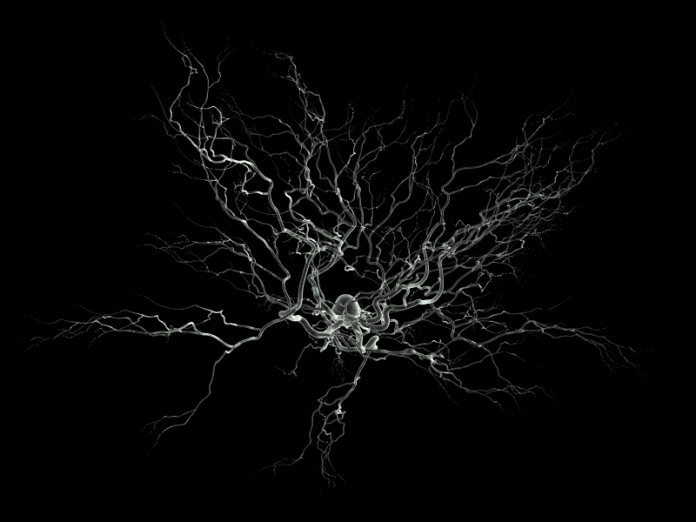Scientists have developed a 3D bioprinting platform that assembles functional انسانی neural tissues. The progenitor cells in the printed tissues grow to form neural circuits and make functional connections with other neurons thus mimicking natural brain tissues. This is a significant progress in neural tissue engineering and in 3D bioprinting technology. Such bioprinted neural tissues can be used in modelling انسانی diseases (such as Alzheimer’s, Parkinson’s etc.) caused due to impairment of neural networks. Any investigation of disease of brain requires understanding how the انسانی neural networks operate.
3D بائیو پرنٹنگ ایک اضافی عمل ہے جہاں موزوں قدرتی یا مصنوعی حیاتیاتی مواد (بائیو انک) کو زندہ خلیوں کے ساتھ ملایا جاتا ہے اور قدرتی بافتوں کی طرح تین جہتی ڈھانچے میں پرت بہ تہہ پرنٹ کیا جاتا ہے۔ خلیے بائیو انک میں بڑھتے ہیں اور قدرتی بافتوں یا عضو کی نقل کرنے کے لیے ڈھانچے تیار ہوتے ہیں۔ اس ٹیکنالوجی میں ایپلی کیشنز مل گئی ہیں۔ پنریوجی medicine for bioprinting of cells, tissues and organs and in research as model to study انسانی جسم وٹرو میںخاص طور پر انسانی عصبی نظام.
کی پڑھائی انسانی nervous system faces limitations due to unavailability of primary samples. Animal models are helpful but suffer from species-specific differences hence the imperative of وٹرو میں کے ماڈلز انسانی nervous system to investigate how the انسانی neural networks operate towards finding treatments for diseases attributed to impairment of neural networks.
انسانی neural tissues have been 3D printed in the past using stem cells however these lacked neural network formation. The printed tissue had not shown to have formed connections between cells for several reasons. These shortcomings have been overcome now.
ایک حالیہ تحقیق میں ، محققین chose fibrin hydrogel (consisting of fibrinogen and thrombin) as the basic bioink and planned to print a layered structure in which progenitor cells could grow and form synapses within and across layers, but they changed the way layers are stacked during printing. Instead of traditional way of stacking layers vertically, they chose to print layers next to another horizontally. Apparently, this made the difference. Their 3D bioprinting platform was found to assemble functional انسانی neural tissue. An improvement over other existing platforms, the انسانی neural tissue printed by this platform formed neural networks and functional connections with other neurons and glial cells within and between layers. This is the first such case and is a significant step forward in neural tissue engineering. Laboratory synthesis of nerve tissue that mimics brain in function sounds exciting. This progress will certainly help researchers in modelling انسانی diseases of brain caused due to impaired neural network to better understand the mechanism for finding a possible treatment.
***
حوالہ جات:
- کیڈینا ایم، ET اللہ تعالی 2020. نیورل ٹشوز کی 3D بائیو پرنٹنگ۔ ایڈوانسڈ ہیلتھ کیئر میٹریلز والیم 10، شمارہ 15 2001600۔ DOI: https://doi.org/10.1002/adhm.202001600
- یان وائی، ET اللہ تعالی 2024. 3D bioprinting of انسانی neural tissues with functional connectivity. Cell Stem Cell Technology| Volume 31, Issue 2, P260-274.E7, February 01, 2024. DOI: https://doi.org/10.1016/j.stem.2023.12.009
***






































